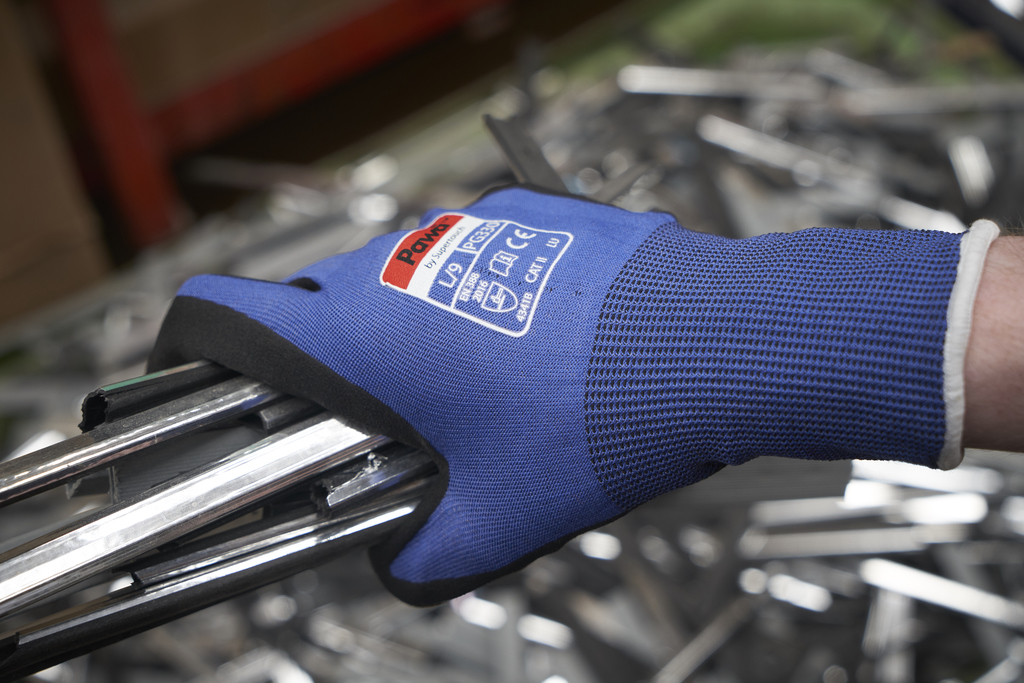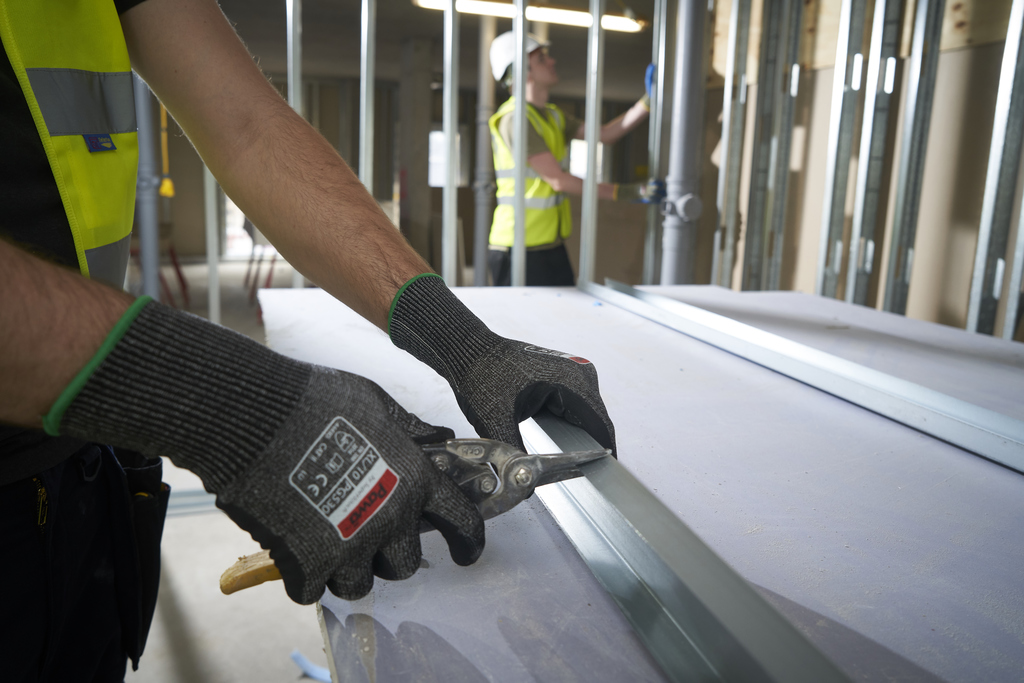
Kelly Rose
Editor

Kelly Rose
Editor
Hand protection is one of the most challenging pieces of PPE to correctly specify. It must simultaneously offer the wearer sufficient protection, while enabling them to productively carry out their day-to-day tasks. Khurram Akhtar takes a look at the latest safety glove technology and how to ensure hand protection is suitable for specific applications.
IT SHOULD go without saying, but hand protection is one of the most important pieces of PPE. Across all industries, there are a range of hazards that must be protected against, ranging from the everyday such as cold weather, to more application-specific challenges such as sharp edges and exposure to oil.
The breadth of hazards makes effective specification of safety gloves critical, because there is simultaneously a requirement to consider a wide number of variables, while also meeting the specific demands of each individual application. With so many factors at play, it is important for those tasked with providing PPE to get to grips with some of the fundamental considerations.
Comfort and employee engagement
One of the biggest influences on uptake for any piece of protective equipment, especially gloves, is comfort. Even before addressing the safety hazards for any given role, it is critical that the wearer is able to use the hand protection for extended periods of time. Failure to prioritise this at the earliest stages will result in employee apathy, and ultimately increase the likelihood of operators not wearing the gloves and putting themselves at risk.
Comfort can be viewed in a number of ways, but at its most basic there needs to be consideration over how well the gloves fit. When specifying for larger groups of people, this is often as simple as ensuring a range of sizes are ordered to ensure everyone on site has access to a suitable pair.
Diving deeper into the issue of comfort, attention should also be paid to hand fatigue. This is where the user experiences tiredness, or in the worst cases, numbness and pain in their digits. Gloves that offer low dexterity increase the chances of hand fatigue occurring, particularly in roles where they must be worn for extended periods of time.
This is where whoever is responsible for PPE procurement must balance the level of protection needed with the long-term comfort of the wearer. For example, a warehouse operative would benefit from durable, ultra-breathable work gloves which are ergonomically designed to allow hands to rest in their natural position and provide the wearer with good levels of dexterity. It is worth noting that comfort should be a priority across all industries, and even in heavy-duty applications the latest technology ensures operators don’t have to suffer.
By considering comfort and the issue of hand fatigue at the specification stage, there will be greater engagement from employees. This is one of the perineal health and safety challenges – ensuring operators buy into the importance of PPE. Promoting a safe working culture is a crucial part of the process, and it often helps to get a PPE supplier on to site for a toolbox talk to engage with the team.
It provides an open and honest platform to promote the fact that this approach is the best way to make life safer on site, rather than disregarding or modifying gloves themselves. Ultimately, maximising the amount of time that PPE is worn throughout the working day should form a central part of the specification process.
Be specific
While comfort is a universal factor, there are many application-specific hazards that can influence hand protection choice, ranging from temperature though to substance exposure. As such, the key to ensuring PPE is fit for purpose is to undertake a thorough audit of all the day-to-day tasks an employee is expected to complete, and use the results to inform what type of gloves need to be specified.
The range of hazards to protect against are numerous, and the best approach is to liaise with suppliers once you have an understanding of the type and level of risks you need to protect against. Depending on the requirement, there are industry Standards which help to provide a guide on the level of protection a particular glove can offer.
The EN388 Standard for mechanical hazards was updated in 2016 to offer more consistent testing for cut-resistance, and helps to display an at-a-glance indication of how well a glove will protect against varying degrees of cut risk. Reputable manufacturers such as Supertouch have resources on their websites to help SHE managers specify the required level of protection.
Specificity is key, not just in terms of the nature of the hazard but also the degree of exposure. If you need gloves that protect against heat, how high is that temperature? How long will the glove be in contact with it? These are the types of questions that health and safety professionals need to investigate, in order to provide the most appropriate protection for employees.
Materials and multi-norm
The latest technological advances in hand protection ensure that many of the challenges outlined above can be addressed with a single pair of gloves. Whereas it was previously often a choice between protection and comfort, the introduction of newer glove shell technology means hand protection can offer both, for instance an ultra-thin 18 gauge glove can now achieve EN 388:2016 level D cut resistance.
One of the most important developments in PPE has been that of multi-norm safety gloves. These are capable of providing protection against multiple hazards, which can be crucial in applications that encompass more than one risk. For example, manufacturing and assembly work is likely to bring operators into contact with sharp edges and oil, all the while requiring high levels of dexterity.
Prior to the development of multi-norm PPE, this presented a choice to employees: either they must change gloves depending on the task, or ‘double-up’ by wearing more than one pair of gloves simultaneously. Both of these are health and safety risks, and prevent operators from carrying out their work productively.
Following a careful assessment of the type of protection required, those tasked with specifying PPE should opt for multi-norm gloves such as those offered by Pawā. This ensures a reduced level of risk in workplaces with multiple hazards, and utilises innovative technology in both materials and production to provide comfort for extended periods of use.
Prioritise quality
Multi-norm gloves are not just superior in terms of performance, but they are also preferable from a value perspective. One of the biggest pitfalls in PPE specification is opting for the cheapest product. Clearly, there must be consideration over the extent to which these protect wearers, alongside the various other factors we have outlined here.
But it is also something of a false economy to simply procure the least expensive gloves, as they are often made from cheaper materials which ultimately do not last as long. Higher quality hand protection is invariably more durable, which means the gloves will last longer before they need to be replaced. If operators are going though multiple cheap gloves in a single day, then investment in a more premium product will very quickly make economic sense.
PPE – the last line of defence
Given the range of industries and applications it is relevant to, there is clearly a huge amount to consider when it comes to specifying hand protection. As we have stressed throughout, the single most important aspect to choosing the right PPE is to get to grips with the specific hazards an operator comes into contact with.
Working with PPE manufacturers such as Pawā can help to ensure the correct hand protection is supplied, and it is often the case that solutions can be specified for hazards which the operator may not even have been aware exists. With this in mind and driven by ever more innovative technology, multi-norm gloves are likely to become increasingly commonplace in the future owing to their ability to protect wearers against several hazards, comfortably throughout the working day.
Pawā has recently extended its cut resistant range, which includes the PG310, PG515, PG535, and PG542. Alongside protecting wearers against cuts, these multi-norm gloves encompass oil resistance, cold resistance, heat resistance and water resistance while offering great dexterity and grip.
Khurram Akhtar is product director at Supertouch. For more information, visit: www.pawaworkwear.com


Unit 3 Rabone Park
SMETHWICK
B66 2NN
UNITED KINGDOM
03451 30 9922